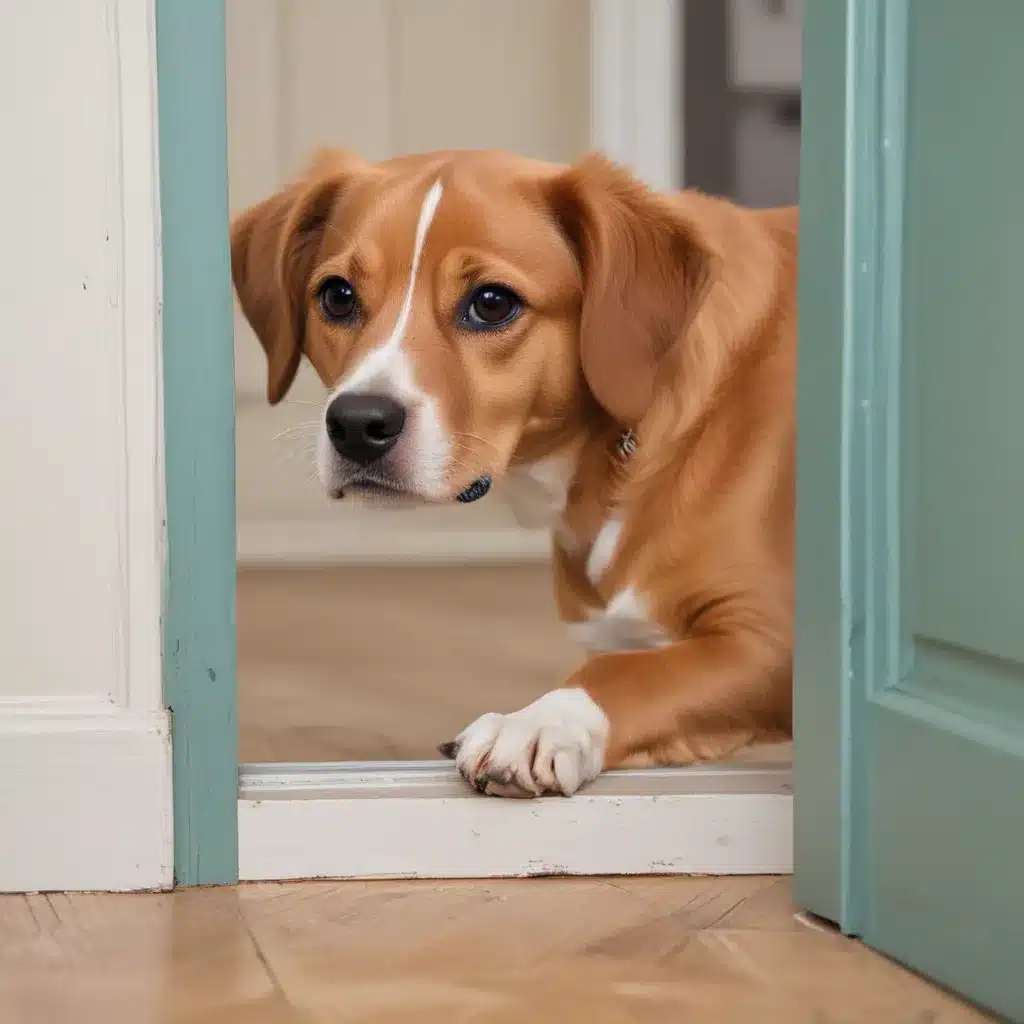
Understanding My Furry Shadow
I’ll never forget the day we brought home our rambunctious Jack Russell, Buddy. He was the cutest little bundle of energy, and I just couldn’t wait to start our new life together. Little did I know, Buddy had a not-so-secret superpower – he was the ultimate Velcro dog, glued to my side 24/7.
At first, it was endearing. Buddy would follow me from room to room, content to simply be in my presence. But as the months went on, I started to notice some concerning behaviors. The minute I’d try to leave the house, even if just to grab the mail, Buddy would erupt into a barrage of frantic barking and whining. It was heartbreaking to see him so distressed, and I felt guilty for causing him such anguish.
I learned that Buddy’s behavior was likely a sign of separation anxiety – a common issue that many dogs struggle with, especially those who have become accustomed to constant human companionship. As I delved deeper into understanding this condition, I realized that Buddy’s plight was not unique, and that there were ways I could help him overcome his fear of being alone.
The Science Behind Separation Anxiety
Dogs are inherently social creatures, evolved to live in close-knit packs. In the wild, being separated from their group would have posed a serious threat to a dog’s survival. So, it’s no wonder that our domesticated canine companions can become so distressed when they’re left on their own.
Separation anxiety manifests in a variety of ways – from incessant barking and howling to destructive behaviors like chewing and digging. Some dogs even experience physical symptoms like drooling, panting, and pacing. The root of the problem is a dog’s intense fear and panic at the prospect of being separated from their beloved owner.
It’s important to note that separation anxiety is not a reflection of a dog’s “naughtiness” or a willful attempt to spite their owner. It’s a genuine anxiety disorder that can be exacerbated by owners who inadvertently reinforce the behavior – for example, by giving their dog lots of attention and affection upon returning home.
Overcoming the Anxiety
As challenging as separation anxiety can be, the good news is that it’s a highly treatable condition. The key is to approach the problem with patience, consistency, and a solid training plan.
Start with Desensitization
The cornerstone of separation anxiety treatment is a technique called desensitization. This involves gradually exposing your dog to the “scary” stimulus (in this case, your absence) in a controlled, step-by-step process. The goal is to help your furry friend associate your departures with positive experiences, rather than panic and distress.
Begin by practicing short periods of separation, perhaps just a minute or two at a time. As your dog becomes more comfortable with these brief absences, slowly increase the duration, always making sure to return before your pup becomes visibly stressed. It’s a delicate balancing act, but with time and consistency, your dog will learn that being alone isn’t something to fear.
Manage the Environment
In addition to desensitization training, it’s crucial to create a safe and calming environment for your dog when you’re not around. This might involve setting up a cozy, secure space like a crate or a quiet room with familiar toys and soothing background noise. Avoid reinforcing departure cues like jingling keys or putting on shoes, and consider using calming aids like Adaptil pheromone diffusers or anxiety-reducing supplements.
Enlist Support
Separation anxiety is a tricky beast, and you don’t have to tackle it alone. Reach out to a certified separation anxiety trainer (CSAT) or an SA Pro Trainer™ who can provide personalized guidance and support. These experts can help you fine-tune your training plan, read your dog’s subtle body language cues, and keep you motivated throughout the process.
A Work in Progress
Overcoming separation anxiety is a journey, not a destination. It may take weeks or even months of dedicated training before your dog feels truly comfortable being left alone. But I can assure you, the effort is well worth it.
As Buddy and I have navigated this challenge together, I’ve learned the importance of patience, compassion, and a willingness to adapt. There have been setbacks and frustrations along the way, but seeing the progress we’ve made has been immensely rewarding. Buddy is now able to enjoy short periods of solitude without descending into a panic, and I know that with continued work, he’ll continue to become more confident and self-assured.
If your furry friend is also struggling with separation anxiety, take heart. With the right strategies and a whole lot of love, you can help them overcome their fears and embrace the joys of being a well-adjusted, independent pup. After all, a little time apart can make the reunions that much sweeter.

